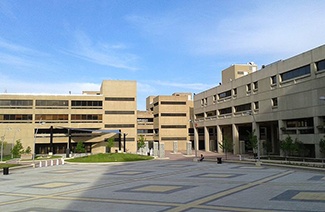12月SAT作文题目详细解析!2017年12月的
从作者选用的写作手法来看,evidence部分比较容易辨识,作者引用了不少数据、权威观点以及机构研究报告;较为隐藏的是reasoning—文章中,作者用两个理由去批评当今盛行的二手服装捐赠及买卖市场: 一是给非洲刚刚起步的纺织品行业造成重大打击;二是助长了人们不负责任的服饰消费文化(fast fashion),而批评某种社会现象一般会涉及“根本原因”、“造成的危害”以及“以正视听”的内容,这就可以归类为logical analysis;贯穿全文的“情感线”也不如以前的文章那么直白,从一开始用YouTube网红视频引起共鸣后,就是对非洲纺织业的同情,嘲讽了“买买买”文化,并且敦促消费者理性消费。
文章的中心思想可以归结为:
The author argues that our current methods of donating and discarding second-hand clothes are causing troubles globally,for example, it deals a blow to Africa’s fragile textile industry and, fueled by the so called “fast fashion”, such a method is also causing environmental impact as it brings tremendous waste.
全文discourse 如下:
1
American rapper Macklemore's hugely popular anthem "Thrift Shop," which has been viewed over 450 million times on YouTube, is a cheeky tribute to the joys of shopping on the cheap, featuring mountains of second-hand coats, sweaters, jackets, jeans, jumpsuits, dresses, shoes and shirts.
作者用最近的网红视频引出话题, 具体表达供参考,下同:
The author cites a recent video that has gone viral on YouTube to raise readers' awareness toward the second-hand clothes market and its growing popularity.
这里有明显的讽刺口吻Sarcastic tone is employed to create resonance with readers.
2
On the surface, the recycling of used clothes, often charitably donated, means old garments don't go to waste, while new owners get a bargain. It seems like a "win-win" situation that couldn't be more ethically sound. And as the Christmas season approaches, millions of Westerners will soon flock to charity shops to donate their second-hand clothes.
作者这里就开始表达自己的不满,这里的on the surface预示反驳开。
The author implies that the public has a mistaken belief of second-hand clothes. Win-win situation sounds ethical, but it entails problems.
In this way, the author foreshadows her disagreement.
3
But on closer inspection, the reselling of clothes is more complex than one might think, posing difficult questions for those hoping to do good by donating their old clothes.
逻辑转折,作者直言“二手服装”市场带来更多麻烦。
The word "but" indicates a logical turn. The author claims/explicitly points out that the reselling of clothes ends up doing more harm than good.
全文提供了两个理由:Throughout the article, the author offers two potent reasons to back up her claim.
4
Contrary to its homespun image, the second-hand clothing industry is dominated by what Dr Andrew Brooks and Prof David Simon at the University of London have called "hidden professionalism." The majority of donated clothing is sold to second-hand clothing merchants, who sort garments, then bundle them in bales for resale, usually outside the country in which the clothing was originally donated.
第一个理由(分论点1),作者揭露了“二手服装”市场受人操纵。
The first reason: a lucrative second-hand clothes market undermines African economy. The author quotes the opinion of a Dr. and a Prof. to reveal an industrial secret. The quotation from experts on the matter strengthens its credibility.
5
One key market is sub-Saharan Africa, where a third of all globally donated clothes are sold. In a paper entitled "Unravelling the Relationships between Used-Clothing Imports and the Decline of African Clothing Industries," Brooks and Simon quote a representative of UK-based anti-poverty organisation Oxfam Wastesaver, who states that 300 bales of second-hand clothing can be sold in Africa for around £25,000 (about $40,000 at current exchange rates), while transport costs are just £2,000. Even taking into account the costs of things like collection and processing, these numbers suggest that the selling of second-hand clothing can be a lucrative affair, especially as the clothing being sold has often been charitably donated for free. While exact figures are scarce, in 2009, used clothing exports from OECD countries were worth $1.9 billion, according to the United Nations Commodity Trade Statistics Database.
这一段为上面的分论点提出有利支持:数据、。
The author offers an example: sub-Saharan Africa as one key market. The reason is obvious, African market is important to the second-hand clothes industry, but it bears brunt of economic impact, which is unfair.
The author goes on by quoting a paper from a UK-based anti-poverty org, to bolster her argument.
She invokes ample statistics to offer a cost- analysis--sales volume, revenue and cost transport to prove that the second-hand clothes market turns out to be a very lucrative one. It's worth mentioning that these figures are the very elements to determine how profitable a business is.
More stats from a 2009 UN authoritative report to back up his claim.
Stats and quotes from credible sources convince readers about the existence of a "hidden profession", providing a strong basis for her further argument.
6
But it's not just the "hidden professionalism" of the used clothing business—and the resulting gap between costs and resale prices—that hurts markets like sub-Saharan Africa. The flood of castoffs collected via second-hand clothing schemes (along with the rise of cheap Chinese apparel imports) have also helped to undermine Africa's own fledgling textiles and clothing manufacturing industry, says Cambridge economist Ha-Joon Chang.
这一段,作者在讲“二手服装”市场对非洲刚刚起步的服装业是一个巨大的打击。
The author goes on by attacking the motive behind the market, profit.
She points out the harm to Africa's own fledgling textile.
The word fledgling appeals to readers' sympathy toward the fragile African textile industry, arousing their desire for protection and exacerbating their concern towards the unfair business practice.
7
The second-hand clothing market has a negative impact in donor markets, as well. Consumers in the global North throw away vast quantities of clothing every year. In the UK, for example, people dump 1.4 million tonnes of clothing into landfills, annually. To combat dumping, charities and local governments have increasingly instituted clothing recycling programmes. But, ultimately, recycling tackles the symptom not the cause—and gives consumers a false sense of security that the rate at which they are consuming and disposing of clothing is at all sustainable.
第二个理由(分论点2)对捐赠衣物方的影响,主要是大量廉价衣物,快消服装造成了大量的浪费,给环境造成压力。
The second reason: negative impact in donor markets.
The author employs apt logical analysis to elucidate why second-hand clothing market impacts environment, raising readers' concern about their responsibility for environment.
She uses figures, facts to prove that the recycling programs gives consumers a false sense of security that their practice of consuming and disposing of clothing is at all sustainable.
8
The truth is, "fast fashion" is a deeply unsustainable model. And by emphasising recycling rather than tackling the root cause of why people continue to buy and dispose of larger and larger quantities of lighter, thinner and less well-made clothing, consumers are reassured that they can continue shopping as normal.
以正视听:什么才是“fashion”
She goes on by attacking the concept of "fast fashion" which is the root cause of shopper’ consuming and disposing of clothing while ignoring their responsibility for the environment
9
"There is now this notion that fashion is just a commodity, and that we are just consumers," laments Dilys Williams, director of the Centre for Sustainable Fashion at the London College of Fashion. "It doesn't do justice to us or to fashion. Fashion should be about cherishing clothes and creating an identity, [but today it's] based on constant adrenalin and the excitement of purchasing. There is no anticipation or dreaming. Nothing lasts or is looked after. We each have a mini-landfill in our closets."
引用权威的观点,敦促消费者对fashion应该有正确的观点。
To back up, she quotes an expert's opinion.
She clarifies public's misconception of what is real fashion/ he redefines the concept of fashion.
She appeals to readers' emotions make his argument more powerful. Words like "adrenalin" "nothing lasts" to ridicule "fast fashion" phenomenon.
Her juxtaposition of images of "mini-landfill" and "closets" are intended to ridicule the no-hold-barred way of consumerism, adding emotional weight to her claim that the second-hand market ends up doing more harm than good, thus persuading readers to correct their views on second-hand clothes market.
10
But why stop and think when the charity shop or recycling bank is there to take care of the mess?
再次追问,强调如何正确对待“二手服装”。
A rhetorical question to wrap up the whole article so as to ask readers to seriously ponder upon their responsibility on the matter.
The word “mess” has double meaning: the second-hand market wreak havoc to Africa’s fragile textile industry. More importantly, the mess caused by irresponsible consumption of “fast fashion”.
Write an essay in which you explain how Tansy E Hoskins builds an argument to persuade her audience that our current methods of donating and discarding second-hand clothes are causing troubles globally. In your essay, analyze how Tansy uses one or more of the features listed in the box above (or features of your own choice) to strengthen the logic and persuasiveness of her argument. Be sure that your analysis focuses on the most relevant features of the passage.
Your essay should not explain whether you agree with Tansy's claims, but rather explain how Tansy builds an argument to persuade his audience.
以上就是为大家整理的“12月SAT作文题目详细解析”全部内容,希望对大家接下来的复习有更好的帮助和启发,更多精彩内容,请持续关注本频道更新,如有其他疑问,请咨询我们的在线老师!

















